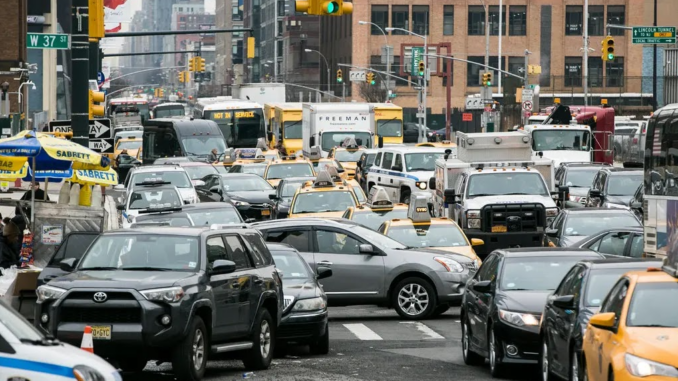
By Shlomie Katash
On Mar. 27, the board of the Metropolitan Transportation Authority (MTA) voted 11-1 to approve the tolling rates for motorists entering at 60th street and below in Manhattan. This is part of the country’s first congestion pricing system that is nearing the final stages of implementation to make efforts to reduce traffic and raise over $1 billion for public transit improvements successful.
According to The New York Times, nearly all the toll readers have been already and may begin automatically charging drivers for entering the zone, mostly using the E-ZPass system. The approved tolls are based on a November 2023 study from the Traffic Mobility Review Board, an advisory committee that reports to the MTA.
On weekdays between 5 A.M. and 9 P.M., most passenger cars will be charged $15 a day, small trucks and charter buses $24 a day, large trucks $26 a day, and motorcycles $7.50 a day. The same fares will apply on weekends, but the hours will begin at 9 A.M. instead; entering the congestion zone outside of the specified hours will reduce the charge by 75%.
Taxi and black car services will be charged $1.50 extra; Ubers and Lyfts $2.50 extra. These costs will apply directly to passengers, who will be responsible for any ride that enters or begins within the zone. Non-rideshare vehicles will only be charged for entering the zone, not moving within it or exiting it. Additionally, rideshare vehicles will not be afforded a nighttime discount.
Because the fees will attempt to be collected using E-ZPass, any vehicles without the system will be charged additional fees, such as $22.50 for passenger cars instead of $15.
The bill authorizing this process was first passed in 2019 under then Governor Andrew Cuomo. According to The City, the details of the plan were left to an expert panel appointed by the MTA. Since then, there has been significant gridlock, research obstacles, and legal challenges that have led to the plan only being agreed upon five years later, which is projected to cut traffic by 17% and raise billions for public transportation, according to Reuters.
“Big day for the MTA, huge day for the region,” MTA Chair and CEO Janno Lieber said in a press conference following the vote, according to NY Daily News. “New York has more traffic than any place in the United States, and now we’re doing something about it.”
The plan now heads to the Federal Highway Administration (FHA), who are expected to approve it, according to The New York Times. If enacted,the plan will take effect by June. However, six lawsuits, including from politicians, residents, and the State of New Jersey, have been filed against the program, citing the high costs and potential environmental effects. Lisa Daglian, executive director of the Permanent Citizens Advisory Committee to the MTA, referred to the legal challenges as “baseless last-resort lawsuit,” according to The City.
“Put simply, congestion pricing is happening,” Daglian said.
